Five ways I enjoy tracking daily life & health
What's worked for me: Day One Journal, Full Focus Planner, Notion, A Single Line a Day Book, and an old-fashioned spiral notebook
The last Odyssey of the Body post delved into the pros of tracking daily life, especially the parts of your day that are important to you.
But how exactly? With a pen and paper? An app? A high-tech ring on your finger? There are thousands of apps, journals, and systems. I haven’t tested 99.9% of them, so if you have tried any you love (or hated), please drop me a line or (for the benefit of all of us) add a comment to the post. This is a work in progress, as is all of life.
I have tried dozens of ways over the years. My infatuation with diaries started and ended in elementary school with a little book fitted a teeny padlock and key. (They still exist! My son has one now.) I don’t have a FitBit or an Oura Ring. (Though I’m curious; please tell me all about them if you have one.) But a few methods have stuck recently, and I’ve grown fond of them. I hope they might help you, too, or give you ideas for what to seek out for yourself.
Here are 5 of my favorite current ways of capturing daily life and health. Three of them are on paper, and two are digital.
1} Day One Journal
All-purpose journal app, with options to create a printed book.
Day One Journal app is simple and easy to use, sliding into the sweet spot of helpful, not-overwhelming features and an intuitive interface. Each entry is dated, and you can add audio and video, and even create templates of custom prompts.
I first heard about it from Michael Hyatt, a former publishing CEO and now head of Michael Hyatt & Co., on his podcast Lead to Win. He mentioned that he has used the Day One Journal daily for 7+ years. I thought, Huh, he runs a company and cares about his routine, and he uses this app every day? I was intrigued.
And it’s true: Day One Journal really is a terrific journal app! The writing space is open and inviting with a familiar word-processing set-up. (Bold, italic, hyperlinks, etc.) It is easy to focus on what you are writing. Entries can be exported at any time, and you can set a passcode.
The basic version (1 journal, 1 device) is free and available on iPhone, iPad, Mac, and Apple Watch. (One downside: No version for Android users or through a web browser.)
The premium version (about $36/year) allows you to have multiple journals and syncs across devices, which I’ve found handy. I can set one up for, say, Daily Thoughts and one for Family Adventures.
If I want to experiment with writing a poem each morning or chronicling cooking notes, it’s easy to make a new journal and name it Daily Poems or My Cooking Chronicles. You can set a different color for each journal.
Here’s what the layout looks like on an iPad:
The left side lists recent entries by date for this particular journal. The right is the current entry in progress. This example shows a blank page with custom prompts I created, but you can start with an empty page, use prompts from Day One, or make your own template of favorite prompts.
Here’s the last and best part. Day One has a built-in capability to make a book from any of your journals. Books start at $14.99 and go up based on type of cover and number of pages. My plan for making that chronicle of Family Adventures was to make a book of our year. (This is not an area I have historically attended to well. I have yet to create a baby album for our elementary schooler, alas.)
I picked which journal, a paperback or hardback cover, and a cover photo, and Day One laid all the entries out automatically. (You can add a tag to certain entries you want to be omitted from the book.)
The layout wasn’t 100% perfect, but it was instantly done. (This is opposed to the dozens of hours I might have spent on a photo album site rearranging, second-guessing, rewriting, and not ever finishing the darn album.)
I clicked a few buttons, paid $27.14 (including shipping), and in a few weeks, a small bright and beautiful printed book showed up in the mailbox, a journal of our family’s year.
It was one of my favorite gifts ever.
2} Full Focus Planner
Ok, what about the daily to-do lists, the meetings, the doctor’s appointments, the don’t-forget-X?
I use two tools: Outlook calendar, which holds all the work meetings, and the Full Focus Planner, a paper planner with a system built around quarterly goals, your “big three” items for your day and year week, and space for weekly reflection. I love books, and a lovely, hardback planner makes me happy.
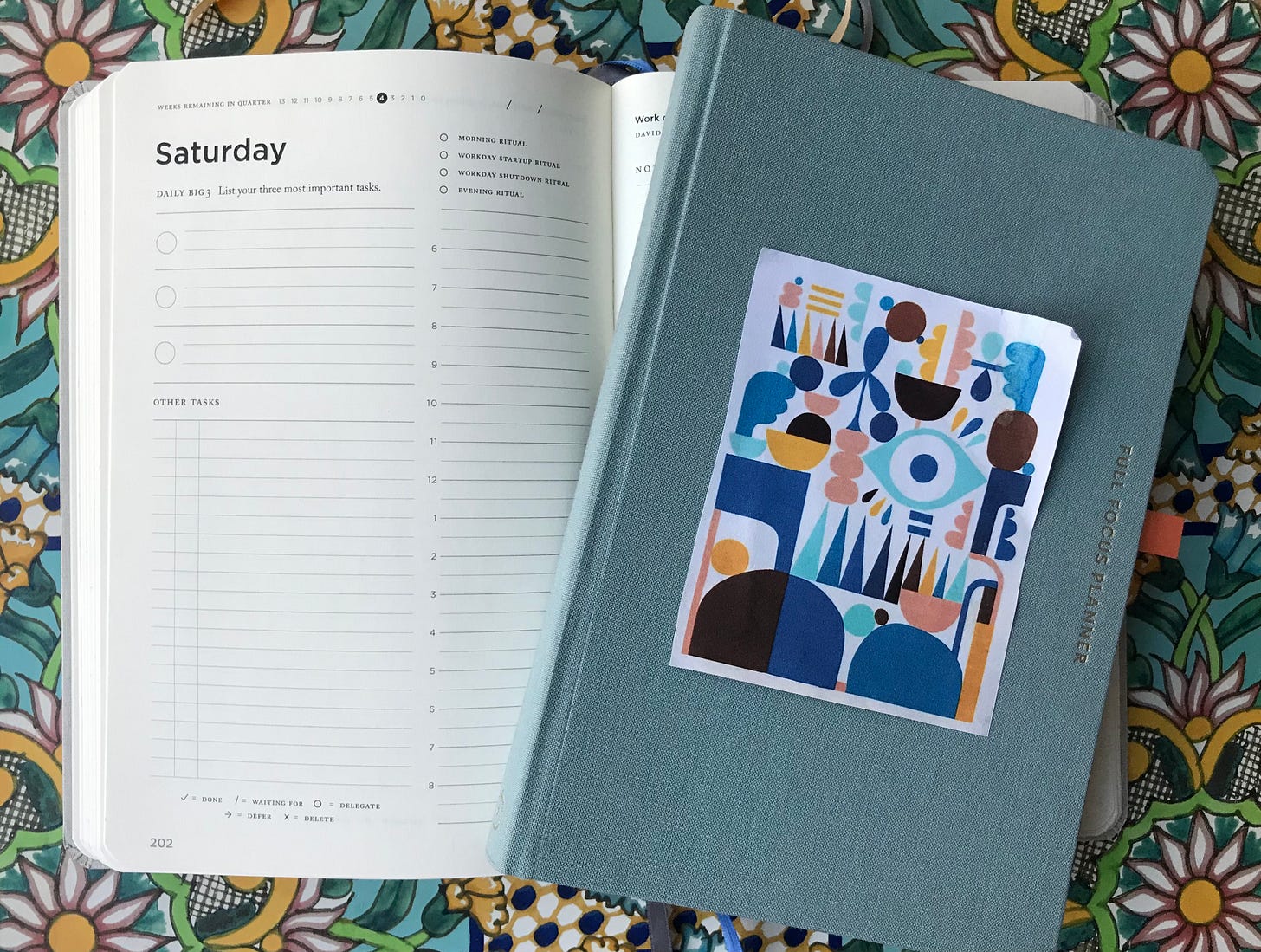
For a while, I was buying annual planners, but I found there wasn’t space. Many of them place an entire week over two small pages. How can a full day possibly fit in that teeny box?
Each regular-sized Full Focus Planner, in contrast, only hold 3 months (one quarter), so every day gets two pages — which means space to capture the day’s schedule, a long to-do-list, and notes.
The Full Focus Planner also has its own system of goal-setting, one that I like. Created by Michael Hyatt & Co., Full Focus Planner is built on the idea of focused, incremental progress day after day with a bigger goal as the ultimate target. So there’s space to write out your yearly goals and dig into the “whys” behind them, space to pick 2-3 goals to tackle in one quarter, and space each day and week to list your “Big 3” items — the 3 things you want to make sure you get done to inch closer to your goals.
The planners also include monthly calendars at the beginning, which I have found useful to note events, travel, and health milestones. They’ve become invaluable for scanning later when in search of a crucial date — say, when our son lost his first tooth, or when I started a new medication, or when we went on a trip.
3} Notion
This is new pretty one to me, but Notion is one of those delightful tools that instantly felt useful — How did I go without something like this for so long? I learned about it from publishing guru Jane Friedman, who recommended it on her Sunday Business Sermons.
This digital filing cabinet of sorts is free for personal users, and you can build all sorts of lists, databases, documents, and links between them. I’ve started a bunch of lists I wish I had begun years ago, such as a list of books I’m reading now and a list of books to read in the future. (I have used Evernote for years and years to save articles, but I find the interface awkward and not as friendly.)
Notion has a little features that are simply fun, too, like how each file has the option to be identified by an emoji icon at the top. Here’s an example of my Reading List:
Notion also makes it easy to embed files within files. For example, I made a page called Reading List, added a table, and started listing the books I’m reading, the author, the genre, the date I finished it. Each book entry, though, can also open up into its own page, so I can keep longer quotes and notes in there. The pages are all nested in a way that’s easy to follow and easy to find.
Personal plans with extra features start at $5/month, though I haven’t needed to upgrade yet. You can use Notion as an app or through your browser, so you can hop between devices and everything is there.
Some of its capabilities are a little unintuitive, so I’d recommend watching Jane’s video or another introduction video to make the most of it.
I did worry that Notion would become another forgotten digital shoebox of random notes, but so far, I’m finding myself drawn to adding to it every day. It’s wonderful to vaguely remember a quote I liked or a study I read, and then go back to Notion, and — amazing! — there it is. Relief and happiness.
4} A Single Line a Day
Easy 3-minute option to tuck away one observation or quote every day.
Years ago, I bought a single book that purported to hold 5 years of memories. Each day, I was supposed to record one sentence.
Well, I found this impossible. I didn’t have another system at that point, and a measly sentence wasn’t going to cover life. So after a tepid attempt, the notebook went to the notebook graveyard, the leaning tower by my nightstand.
But a few weeks ago, I read a post by writer and artist Austin Kleon, who used such a book to capture one quote a day. Ah! Now that’s more doable and interesting. (He got the idea from Dan Pink.)
Austin’s collected quotes come all over the place — books, articles, overheard conversations, his own kids.
I love the juxtaposition:
(Check out Austin’s newsletter here.)
You could use a line-a-day book for either option, or some other format — like one note about your health. Oh, possibilities!
5} Health Notebook
Utterly simple way to track your health, especially useful during rough spells.
All of these systems work fine when life is humming along.
But what about when you are sick?
I wish I had a better all-around health tracker to recommend, but when I feel rotten, I am in no mood to try to figure out a new app. Instead, I fall back on something I learned from my mom and my years of journalism: Pen on paper, recording what’s important.
I dig up a cheap spiral notebook and start by dating the first page. I draw a line down the middle, and list everything I eat and drink on the left side and my activities (sleep, exercise, pain levels, BMs, vomiting, diarrhea, you know, all the important awful stuff no one wants to talk about) on the right side. I draw a box in the corner to put my weight and create a row checkboxes at the top, one for each medication.
It’s simple, but writing this down every day helps me see my trajectory more clearly, notice foods that aren’t going down well (often, it’s a couple of meals back that causes the issue, not the most recent one, and who remembers?), and have a reference to help answer doctor’s questions. (GI doctors always ask how exactly many bowel movements you are having. When you are sick in a GI way, really, who counts?!)
***
Whew. That’s all for today! (Was that too much? Seriously, you can email me — Brianne, that was TOO LONG — and I’ll keep that in mind in the future. Or: More photos! Less photos! Can you read it so I can listen to it while commuting? I have considered this! Any feedback would be super welcome.)
I hope one of these systems might work for you, too, or spark you to find an even better system for your life.
I hope you have a sweet weekend ahead, full of moments worth recording and saving.
To our journeys and healthy days ahead,
Brianne


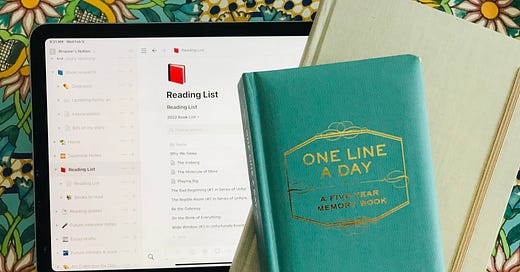

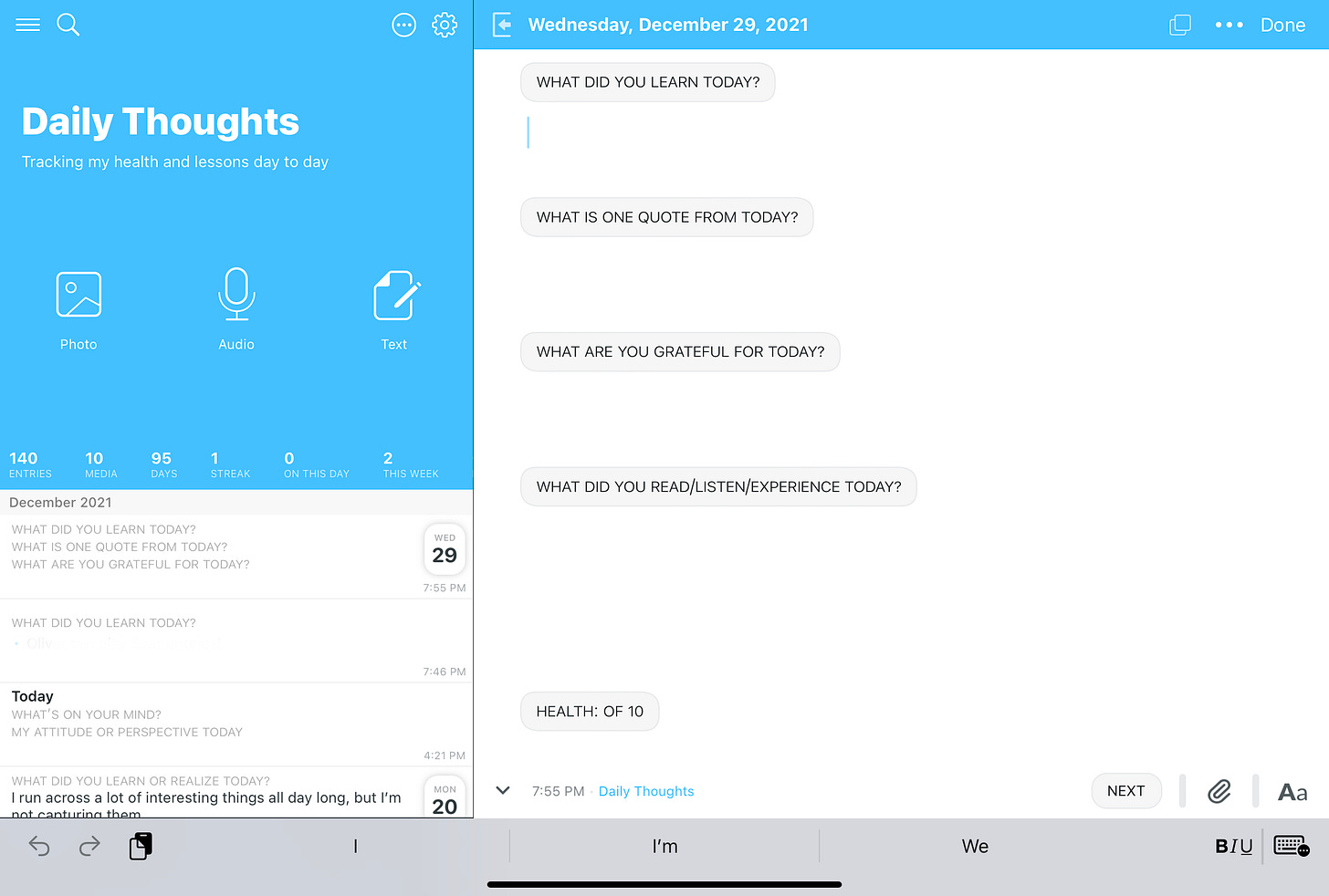
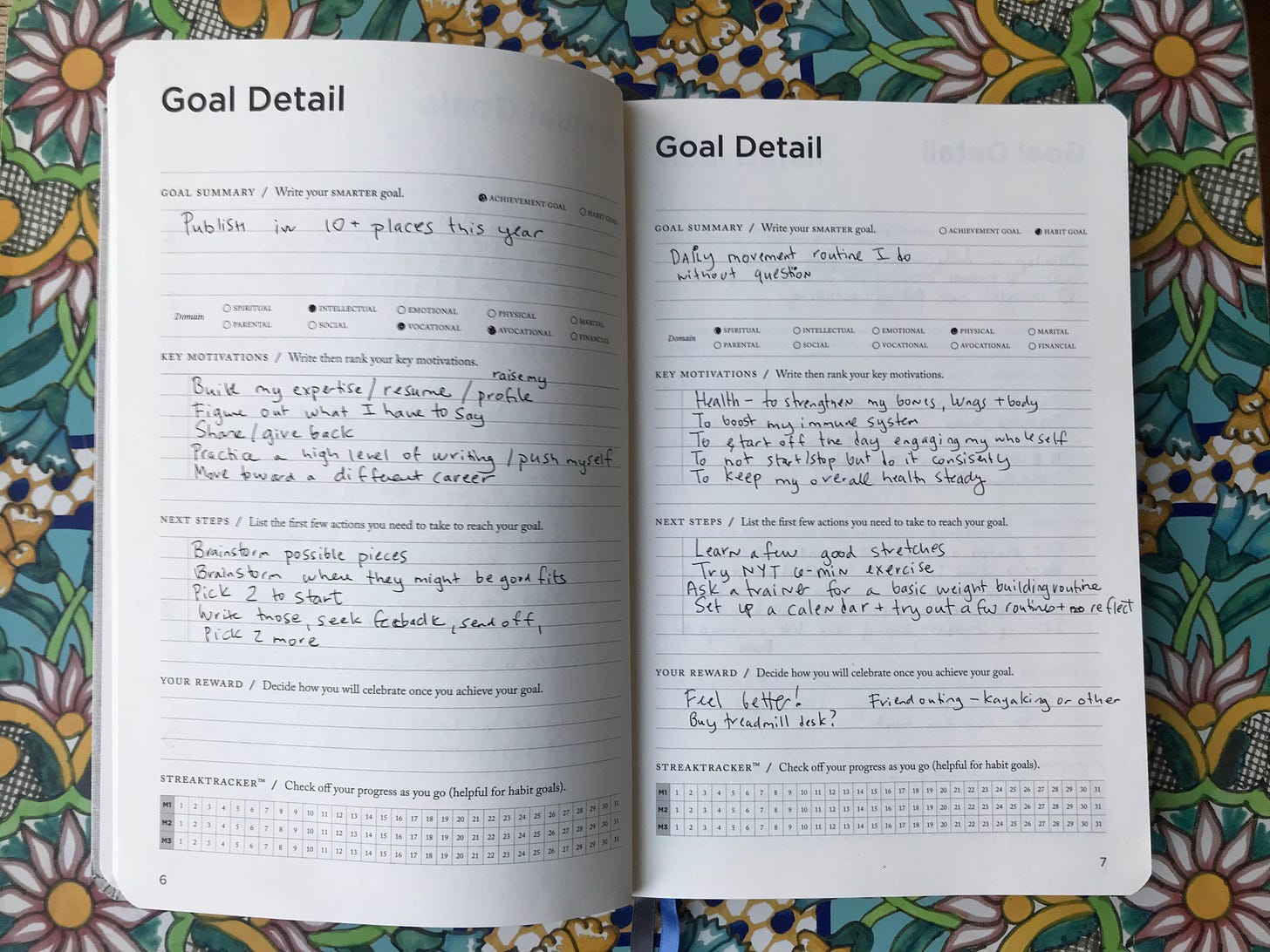

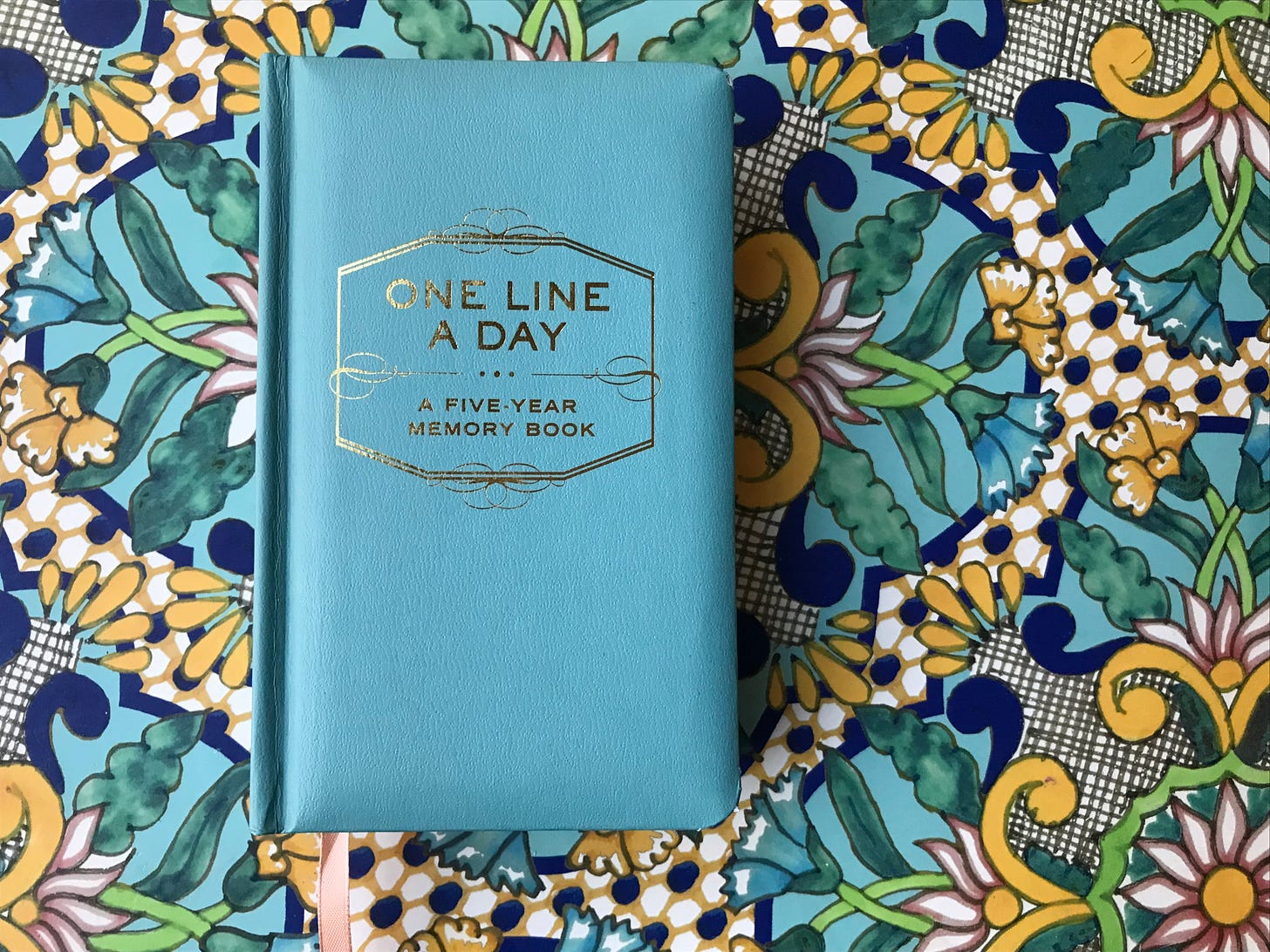
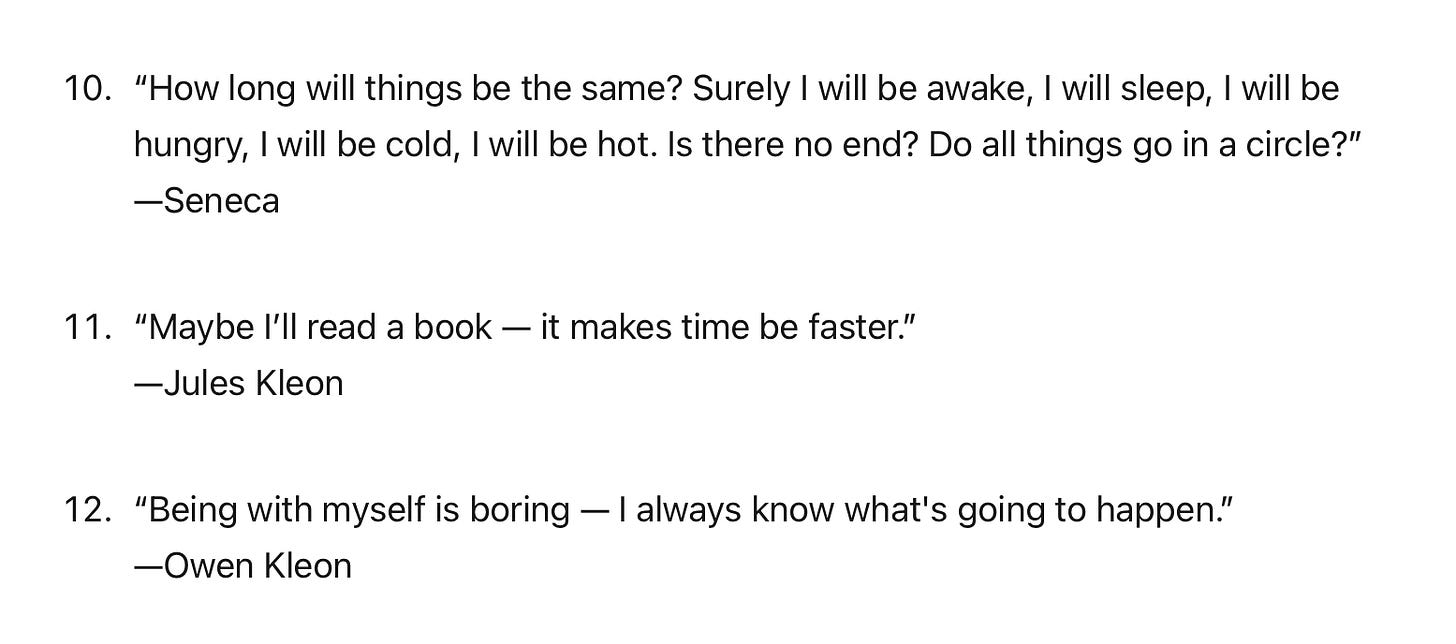
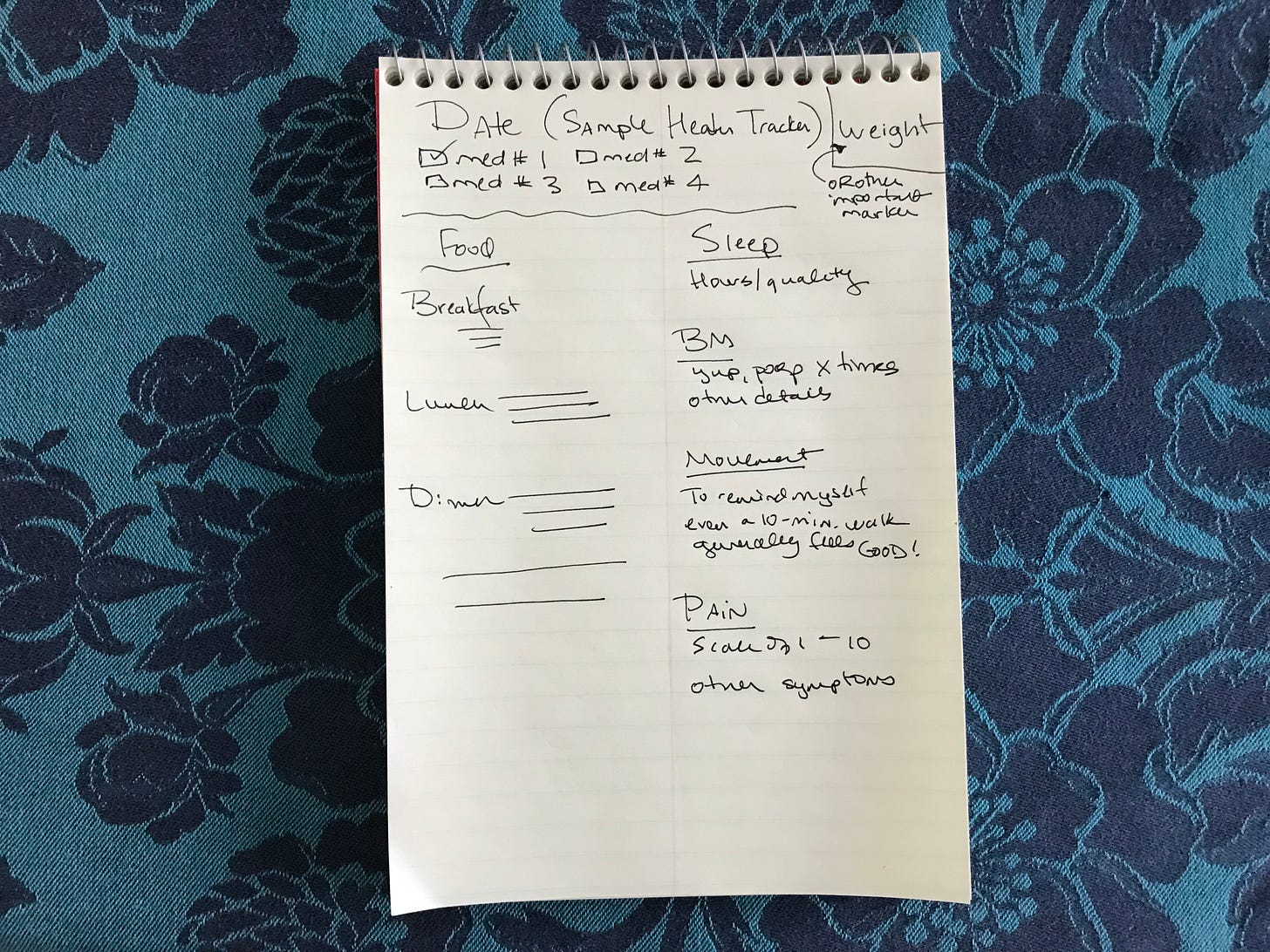
Brianne, I loved reading all of this! The Austin Kleon references, the Lisa Congdon image, the backgrounds of each of your photos!! Especially related when you said "I love books, and a lovely, hardback planner makes me happy."
I'm certainly going to check out the Full Focus Planner -- the goal details are awesome, but a little terrifying for me to be able to get so specific! I've used Notion for work, which has become incredibly overwhelming, but I really enjoy how you've segmented each section, so perhaps I can try it for my own purposes. I've used an Apple Watch occasionally, more-so just to get a baseline on where I'm at from a movement perspective every so often, but I'm considering getting a Garmin watch instead, as I like a little less of my personal data to be shared these days.
Loved how long this was, how much thought and detail you put into it, and it felt like a great way to start my Monday morning :)
I love this glimpse into how you're tracking everything from daily tasks to health. I'm especially intrigued by the Day One Journal app and am going to check that out. Everyday I document one "thing of beauty" - just something little that made me smile (it's often a cat in someone's window or a cute dog I saw being walked). I'm doing it on paper right now, but I track everything else digitally so it would be nice to move that to an app, as well. I love the idea of being able to have it printed! I also use Notion, and am really loving it (I also love adding the little icons to each page). I like that it lives on my phone and my laptop and I can move seamlessly between the two. I use a "habit tracker" template there for things like drinking water, meditation, running-- I'm not sure it would be detailed enough for your health tracking, but it's pretty flexible and adaptable. Thanks for sharing!